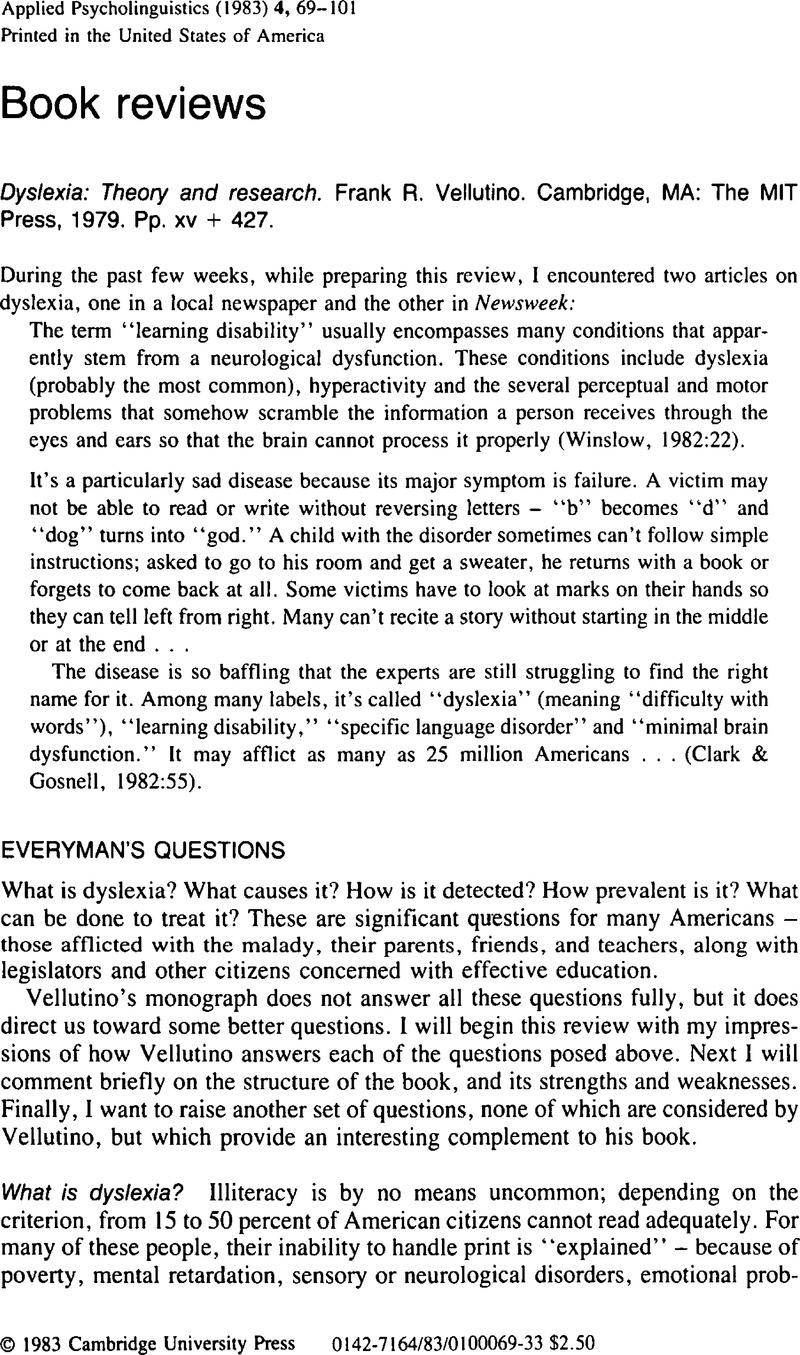Crossref Citations
This article has been cited by the following publications. This list is generated based on data provided by Crossref.
Stanovich, Keith E.
1986.
Matthew Effects in Reading: Some Consequences of Individual Differences in the Acquisition of Literacy.
Reading Research Quarterly,
Vol. 21,
Issue. 4,
p.
360.
Felton, Rebecca H.
and
Wood, Frank B.
1989.
Cognitive Deficits in Reading Disability and Attention Deficit Disorder.
Journal of Learning Disabilities,
Vol. 22,
Issue. 1,
p.
3.
Leong, Che Kan
1989.
The Locus of So-Called IQ Test Results in Reading Disabilities.
Journal of Learning Disabilities,
Vol. 22,
Issue. 8,
p.
507.
Brown, Idalyn S.
and
Felton, Rebecca H.
1990.
Effects of instruction on beginning reading skills in children at risk for reading disability.
Reading and Writing,
Vol. 2,
Issue. 3,
p.
223.
Leong, Che Kan
1991.
Developmental dyslexia revisited and projected.
Annals of Dyslexia,
Vol. 41,
Issue. 1,
p.
23.
Ball, Eileen W.
1993.
Phonological awareness.
Reading and Writing,
Vol. 5,
Issue. 2,
p.
141.
Joshi, R. Malatesha
Dahlgren, Mary
and
Boulware-Gooden, Regina
2002.
Teaching reading in an inner city school through a multisensory teaching approach.
Annals of Dyslexia,
Vol. 52,
Issue. 1,
p.
229.
Stanovich, Keith E.
2009.
Matthew Effects in Reading: Some Consequences of Individual Differences in the Acquisition of Literacy.
Journal of Education,
Vol. 189,
Issue. 1-2,
p.
23.
Ortiz, Andrés
Martinez-Murcia, Francisco J.
Luque, Juan L.
Giménez, Almudena
Morales-Ortega, Roberto
and
Ortega, Julio
2020.
Dyslexia Diagnosis by EEG Temporal and Spectral Descriptors: An Anomaly Detection Approach.
International Journal of Neural Systems,
Vol. 30,
Issue. 07,
p.
2050029.





